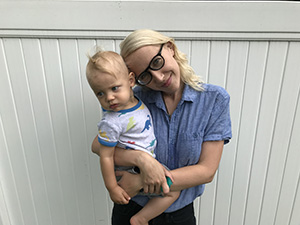Question & Answer - Speech-Language Disorders and Treatment
What are some fast facts about HIE and speech-language delays?November 2018 |
|||
|
Answer from: B. Burguess, Mother and Writer in Michigan, USA Speech-Language Delays and Other Underlying Conditions Many children have speech and language delays or disorders that impact their ability to form words, speak clearly, or process language. Commonly, children who have conditions such as hypoxic-ischemic encephalopathy (HIE), cerebral palsy, or other brain injuries experience speech and language delays and disorders among their other symptoms. Brain injuries due to HIE are rarely confined to one specific area of the brain, though it is possible in mild cases. Because of this, children with HIE or other brain injuries often experience a range of developmental delays. Therefore, speech and language delays are common among these children. What are Speech and Language Disorders? A Speech Disorder is when a child is not developing speech sounds as found in speech assessments and the speech literature. There are some checklists online. However, parents can find literature-based, criterion-referenced speech and communication developmental checklists (beginning at birth) in books such as Nobody Ever Told Me or My Mother That! Everything from Bottles and Breathing to Healthy Speech Development (Bahr, 2010, Chapter 7). There are two broad categories of language disorders. Expressive Language Disorders relate to the ability to communicate meaning to others. Receptive Language Disorders relate to the ability to understand someone else’s message. Symptoms of Expressive Language Disorders include: -Difficulties constructing grammatically-correct or complex sentences, using standard grammar conventions, and finding words -Overuse of placeholders like “um” or “uh” -Smaller vocabulary than is age-appropriate -Repetition of certain phrases and echoing of questions in verbal responses Symptoms of Receptive Language Disorders include difficulties: -Understanding speech -Following spoken directions -Organizing thoughts When Should a Child Receive Speech-Language Therapy, and Who Can Help? If a child is not acquiring speech and/or language at the usual, expected rate, it is recommended parents work with the child’s pediatrician to have the child evaluated as soon as possible. These children may require some extra assistance or therapy to help them acquire speech and language, or they may need extra intervention in the case of concurrent developmental issues such as HIE. It is critical to make these diagnoses early, so the child may receive the necessary care and assistance. Speech-language pathologists (SLPs) are highly trained specialists who are specifically trained to help with speech and language development. SLPs do a broad range of tasks to help children with speech and language delays or disorders. Such tasks include the assessment and treatment of: -Speech Articulation and Intelligibility: How well a child can physically produce words and sounds, as well as how well other people can understand their speech -Expressive Language Skills: How well a child can navigate the rules and systems governing communication, such as semantics, pragmatics, and syntax -Receptive Language and Listening Skills: How well a child listens to and understands language -Stuttering and Speech Fluency: How smoothly a child can speak and control vocal tics -Voice and Resonance: How a child uses voice, as well as the oral and nasal areas to make speech understandable -Social/Pragmatic Language: How a child changes language in response to different social situations and settings, follows the rules of conversation, and communicates for different purposes -Cognitive-Communication Skills: How a child uses communication skills based on cognitive processes -Augmentative and Alternative Communication (AAC): How a child uses systems of communication that can supplement or relate verbal speech if the child cannot speak verbally -Swallowing, Feeding, and Chewing: How a child uses mouth and throat muscles/structures for eating and drinking SLPs can be found in the hospital settings, though the overwhelming majority are employed by local schools and school districts. Some can also be found in local therapy offices, university clinics, and long-term care facilities. Talk to your pediatrician about your child’s speech-language issues, and ask for a recommendation today if your child is struggling with any of the problems mentioned in this article!
About the Author B. Burguess is a mother and writer in Michigan, who focuses on pregnancy, parenting, and children with disabilities. She writes for The HIE Help Center, a website that offers information and supportive resources for families of children with hypoxic-ischemic encephalopathy (HIE). You can contact B. at community@hiehelpcenter.org. |
|||
